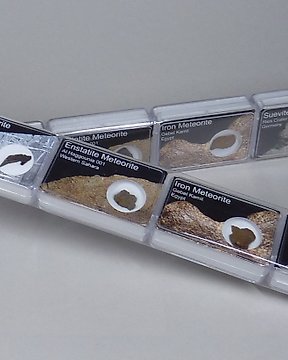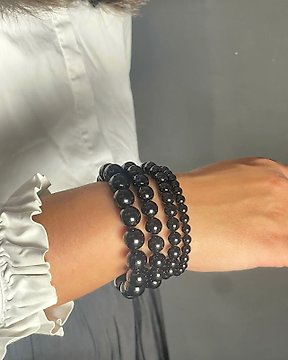oggetto imballato perfettamente e con tutti i documenti legali necessari alla vendita. È monotono 😀 😃 ma acquistare dalle ditte che collaborano con catawiki è sempre una sicurezza ed un piacere
Vertaling bekijkenOud-Romeins Glas Zalf. 1e - 3e eeuw n.Chr. 9,9 cm hoog. Ex Sotheby's
Nr. 86700697



Ointment.
- Ex Sotheby's -
Ancient Roman, 1st - 3rd century AD.
Glass
9.9 cm height.
PROVENANCE: Private collection from the United Kingdom. Purchased at Sotheby's December 8, 1994 as lot 170.
CONDITION: Good condition. Intact.
DESCRIPTION:
Big and small sized bottles of various shapes (more or less globular body, tall or low flared neck, ribbed or plain handles, etc.) and blown in different colors (aubergine, blue, yellow, transparent, green, etc.) were very popular from the 1st to the 4th century A.D.: they were part of the most frequently used toiletry tools. Their success certainly encouraged glassworkers to be highly inventive in order to create new versions, even more attractive to the public.
Towards the end of the Hellenistic period, glass definitely supplanted terracotta as a raw material for the manufacture of containers in all areas of daily life: this event, which occurred gradually, shall be regarded as a major technical revolution in antiquity, made easier, in early Roman times, by the invention and quick spread of the blowpipe, and by the conception of furnaces resisting to higher and higher temperatures.
With a versatility like no other known material in Roman times, abundant availability, lightness and ease of use, glass enabled the imitation of a wide range of other materials (especially precious metals), whether in the form, the design or the color. Furthermore, the ancients certainly knew that glass is a chemically neutral substance, what makes it particularly suitable for the storage of cosmetics or pharmaceutical products, as well as food and liquids.
Just about all Roman burials contain clear or greenish glass vessels covered with an iridescent patina due to the action of humidity and air. These flasks, when made in narrow forms, are often called unguentaria or lacrimaria by collectors, but were only used to contain oils and perfumes in the tombs, not to be containers for tears.
The Romans also perfected the art of working figures in relief on the glass vessels with the addition of another layer of glass of a different colour, or one of enamel, along with moulding, cutting or engraving of the glass, with the result that the surfaces of the containers looked like worked cameos.
BIBLIOGRAPHY:
- ARVEILLER-DULONG, Véronique. NENNA, Marie-Dominique. Les verres antiques au museé du Louvre. Tomo II. Museé du Louvre. 2006.
- FLEMING, Stuart J. Roman Glass: Reflections on Cultural Change. University of Pennsylvania Museum of Archaeology and Anthropology. 1999.
Notes:
- The piece includes authenticity certificate.
- The piece includes Spanish Export License (Passport for European Union) - If the piece is destined outside the European Union a substitution of the export permit should be requested, can take between 1-2 weeks maximum.
- The seller guarantees that he acquired this piece according to all national and international laws related to the ownership of cultural property. Provenance statement seen by Catawiki.
De verkoper stelt zich voor
Ointment.
- Ex Sotheby's -
Ancient Roman, 1st - 3rd century AD.
Glass
9.9 cm height.
PROVENANCE: Private collection from the United Kingdom. Purchased at Sotheby's December 8, 1994 as lot 170.
CONDITION: Good condition. Intact.
DESCRIPTION:
Big and small sized bottles of various shapes (more or less globular body, tall or low flared neck, ribbed or plain handles, etc.) and blown in different colors (aubergine, blue, yellow, transparent, green, etc.) were very popular from the 1st to the 4th century A.D.: they were part of the most frequently used toiletry tools. Their success certainly encouraged glassworkers to be highly inventive in order to create new versions, even more attractive to the public.
Towards the end of the Hellenistic period, glass definitely supplanted terracotta as a raw material for the manufacture of containers in all areas of daily life: this event, which occurred gradually, shall be regarded as a major technical revolution in antiquity, made easier, in early Roman times, by the invention and quick spread of the blowpipe, and by the conception of furnaces resisting to higher and higher temperatures.
With a versatility like no other known material in Roman times, abundant availability, lightness and ease of use, glass enabled the imitation of a wide range of other materials (especially precious metals), whether in the form, the design or the color. Furthermore, the ancients certainly knew that glass is a chemically neutral substance, what makes it particularly suitable for the storage of cosmetics or pharmaceutical products, as well as food and liquids.
Just about all Roman burials contain clear or greenish glass vessels covered with an iridescent patina due to the action of humidity and air. These flasks, when made in narrow forms, are often called unguentaria or lacrimaria by collectors, but were only used to contain oils and perfumes in the tombs, not to be containers for tears.
The Romans also perfected the art of working figures in relief on the glass vessels with the addition of another layer of glass of a different colour, or one of enamel, along with moulding, cutting or engraving of the glass, with the result that the surfaces of the containers looked like worked cameos.
BIBLIOGRAPHY:
- ARVEILLER-DULONG, Véronique. NENNA, Marie-Dominique. Les verres antiques au museé du Louvre. Tomo II. Museé du Louvre. 2006.
- FLEMING, Stuart J. Roman Glass: Reflections on Cultural Change. University of Pennsylvania Museum of Archaeology and Anthropology. 1999.
Notes:
- The piece includes authenticity certificate.
- The piece includes Spanish Export License (Passport for European Union) - If the piece is destined outside the European Union a substitution of the export permit should be requested, can take between 1-2 weeks maximum.
- The seller guarantees that he acquired this piece according to all national and international laws related to the ownership of cultural property. Provenance statement seen by Catawiki.
De verkoper stelt zich voor
- 830
- 9
- 1
Tutto bene
Vertaling bekijkenIt's always a pleasure. Until next time. Thank you.
Vertaling bekijkenHappy with the purchase, the order arrived intact. Item is in good condition, and advertised, everything went great
Vertaling bekijkenEverything was perfect! thank you regards
Vertaling bekijkenExcelente vendedor. Todo muy bien. El envío muy rápido. Recomendable. Muchas gracias
Vertaling bekijkenvery good as always
Vertaling bekijkenTrès beaux objets de qualité avec certificats d'authenticité et explications.vendeur au Top. Merci
Vertaling bekijkenbellissimoooooo grazie top 💯💯💯 come sempre
Vertaling bekijkenGreat purchase! Very well packaged; arrived very fast with all the necessary paperwork. Thank you!
Vertaling bekijkenTodo bien y rápido. Embalaje perfecto.
Vertaling bekijkenVendeur réactif. Délai de livraison respecté . Merci! Monique
Vertaling bekijkenTutto perfetto.
Vertaling bekijkenThis is the second time I order with this seller and I am very positive. The terracotta item comes in a small box packed in bubble wrap. delivery is a bit expensive but safe and extremely fast.
Vertaling bekijkenUna garantía total comprar en una tienda de objetos arqueológicos de prestigio en pleno centro de Barcelona, con toda la documentación perfectamente editada y con un trato personal muy bueno.
Vertaling bekijkenVery swift handling and exactly as advertised
Vertaling bekijkenVery nice statue in good conditions
Vertaling bekijkenoggetto bellissimo corrispondente alla descrizione. Ottima confezione e dettaglio della certificazione
Vertaling bekijkenMagnífica la entrega y el objeto. Perfecta la sonido del sibato
Vertaling bekijkenvery well packed with all the documents included, thnks
Vertaling bekijkenGreat object. Really beautiful. Quick delivery. Excellent.
Vertaling bekijkenSuperbe objet, Service d'Arqueologia Ancient Art excellent et rapide. Jaume Bagot toujours parfait .
Vertaling bekijkenTodo perfecto gracias
Vertaling bekijkenNice item all ok A+++
Vertaling bekijkenThank you for this Oinochoe, one question: did you as promised read my post!
Vertaling bekijken- 830
- 9
- 1
oggetto imballato perfettamente e con tutti i documenti legali necessari alla vendita. È monotono 😀 😃 ma acquistare dalle ditte che collaborano con catawiki è sempre una sicurezza ed un piacere
Vertaling bekijkenDisclaimer
De verkoper garandeert dat het object legaal is verkregen en kan dit bewijzen. Catawiki heeft de verkoper geïnformeerd dat hij/zij documentatie moet overleggen die vereist is volgens de wetten in hun land van verblijf. De verkoper garandeert dat hij/zij toestemming heeft om het object te verkopen/exporteren. De verkoper zal alle over het object bekende herkomstgegevens aan de koper verstrekken. De verkoper zorgt ervoor dat eventueel benodigde vergunningen zijn/zullen worden geregeld. De verkoper zal de koper onmiddellijk informeren over eventuele vertragingen bij het verkrijgen van dergelijke vergunningen.
De verkoper garandeert dat het object legaal is verkregen en kan dit bewijzen. Catawiki heeft de verkoper geïnformeerd dat hij/zij documentatie moet overleggen die vereist is volgens de wetten in hun land van verblijf. De verkoper garandeert dat hij/zij toestemming heeft om het object te verkopen/exporteren. De verkoper zal alle over het object bekende herkomstgegevens aan de koper verstrekken. De verkoper zorgt ervoor dat eventueel benodigde vergunningen zijn/zullen worden geregeld. De verkoper zal de koper onmiddellijk informeren over eventuele vertragingen bij het verkrijgen van dergelijke vergunningen.









